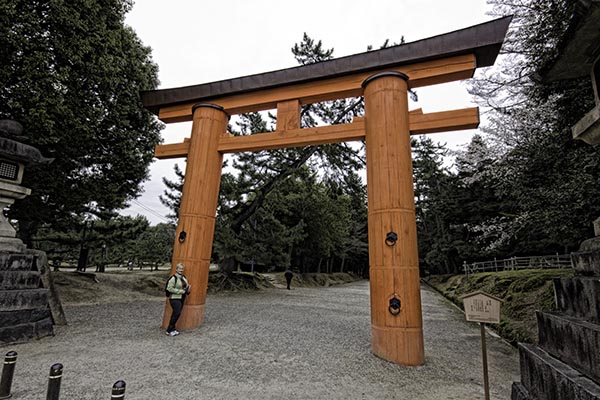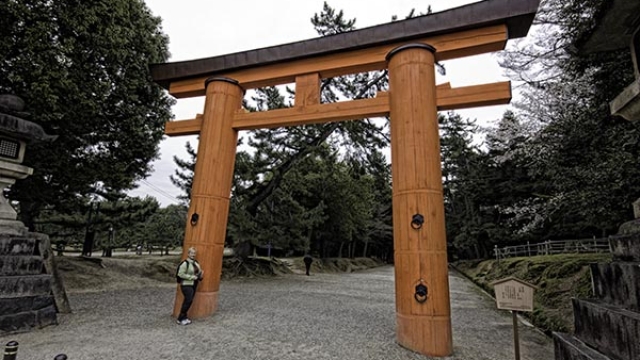
In the heart of Japan’s lush landscapes, where ancient trees whisper tales of the past, lie the sacred spaces known as Shinto shrines. These enchanting sites are not merely structures but embodiments of a spiritual connection to nature, tradition, and the divine. As you step through the torii gate, the vibrant entrance that marks the transition from the mundane to the sacred, a sense of reverence envelops you. The air is imbued with a tranquility that invites reflection and a deeper connection to the world around us.
Shinto shrines are uniquely captivating, reflecting the profound belief in kami, the spirits inherent in all aspects of nature. Each shrine is designed with meticulous care, harmonizing with its surroundings to create an atmosphere of peace and spiritual beauty. The rituals, ceremonies, and festivals held at these shrines not only honor the kami but also connect communities to their cultural heritage. As we delve deeper into the sacred beauty of Shinto shrines, we uncover the whispers of eternity that resonate through their quiet elegance and enduring traditions.
Historical Significance
Shinto shrines, known as "jinja," are vital components of Japanese culture and history, embodying the spiritual beliefs of the Shinto religion. These structures date back to ancient times, with some of the oldest shrines having origins that can be traced to the early Yayoi period. This deep historical lineage not only reflects the enduring nature of Shinto practices but also illustrates how these shrines have been central to community identity and cultural continuity throughout Japan’s turbulent history.
Throughout the centuries, Shinto shrines have served as places of worship, rituals, and communal gatherings. They were often the site of important events such as harvest festivals and rites of passage, playing a crucial role in the agricultural society of early Japan. Monumental shrines like Ise Jingu and Fushimi Inari Taisha have gained prominence over time, evolving into symbols of national pride and spirituality. These sites represent the intricate relationship between the land, the people, and their deities.
The architectural styles and practices associated with Shinto shrines also reveal much about Japan’s cultural evolution. Traditional wooden structures, designed to blend harmoniously with nature, embody the Shinto belief in kami, or spirits of nature. There is a profound respect for the materials and craftsmanship involved in shrine construction, emphasizing a connection to the past while adapting to the present. As Japan modernized, the significance of Shinto shrines as cultural and historical icons remained, serving as reminders of the country’s storied heritage and the ongoing reverence for nature and spirituality.
Architectural Elements
Shinto shrines embody a unique architectural style that reflects the natural beauty and spiritual essence of Japan. Often constructed using wood, these structures harmoniously blend with their surroundings, showcasing a profound respect for nature. The simplicity of the design, with its thatched roofs and natural materials, invites visitors to connect with the tranquility of the environment. The use of straight lines and a minimalist approach emphasizes the shrine’s sacred purpose, encouraging a sense of peace and reflection.
One of the defining features of Shinto shrine architecture is the torii gate, which marks the transition from the mundane to the sacred. These iconic gates, often painted in vibrant vermillion, are typically positioned at the entrance of the shrine grounds. They serve not only as a physical marker but also as a spiritual gateway, inviting worshippers to leave behind the everyday world and enter a space of reverence. The design of the torii varies regionally, but its symbolic significance remains constant, signifying a boundary between the earthly realm and the divine.
Shinto Shrines In Japan
The honden, or main hall, is another critical component of a Shinto shrine, where the kami, or spirits, are enshrined. The honden often features a raised structure with an elegant roof, adorned with intricate carvings and symbolic motifs. Inside, the sacred objects are housed, creating an atmosphere of holiness. The architectural layout of the shrine typically follows a linear progression, leading visitors through various spaces that enhance the spiritual journey. Each element, from the purity of the materials to the placement of structures, is meticulously designed to foster a deep connection between humanity and the spiritual world.
Cultural Practices
Shinto shrines serve as the heart of many cultural practices in Japan, reflecting the deep connection between spirituality and community life. Rituals conducted at these shrines often revolve around seasonal festivals known as matsuri, which celebrate various kami, or spirits. These celebrations not only honor the deities but also reinforce communal bonds as families and communities come together to partake in traditional dances, music, and offerings. Through these vibrant festivals, the cultural heritage of the region is preserved and passed down to future generations.
Another significant practice at Shinto shrines is the act of purification, known as harae. Visitors typically begin their journey by cleansing themselves at a water basin, which symbolizes the removal of impurities and allows them to approach the sacred space with a pure heart. This ritual embodies the Shinto belief in the importance of physical and spiritual cleanliness, establishing a clear distinction between the mundane and the divine. The serenity of the shrine’s setting enhances the experience, inviting individuals to reflect and connect with the higher realms.
Additionally, the practice of ema, or wooden plaques on which prayers and wishes are written, plays an essential role in the personal spiritual journeys of visitors. These plaques are hung at shrines, where kami are believed to receive the hopes and dreams inscribed. The act of writing an ema creates a tangible connection between the individual and the divine, allowing for personal expression and reflection. This custom emphasizes how Shinto shrines cater to the spiritual needs of the people, making them vital centers for both reverence and personal growth.
Natural Harmony
Shinto shrines are deeply intertwined with the natural world, embodying a philosophy that celebrates the beauty and sanctity of nature. The careful placement of these shrines within serene landscapes reflects a profound respect for the environment. Surrounded by trees, mountains, and rivers, each shrine resonates with the spirit of the land, creating a harmonious setting that invites contemplation and reverence. This connection fosters a sense of unity between the divine, the architecture, and the earth itself.
The design of Shinto shrines often incorporates natural elements, using wood, stone, and water to enhance their spiritual significance. Torii gates, archways that mark the entrance to sacred space, stand as symbols of transition from the mundane to the sacred. These structures blend seamlessly with their surroundings, drawing the eye to the beauty of nature that frames them. By embracing local flora and fauna, Shinto shrines serve as a reminder of the importance of ecological balance and the interdependence of all living things.
Visiting a Shinto shrine offers a unique opportunity to experience tranquility and connection to the natural world. As one strolls through the grounds, the sounds of rustling leaves and flowing water create an immersive atmosphere that calms the spirit. The rituals and practices conducted at these shrines further emphasize the belief in nature’s sacredness, as offerings of rice, sake, and flowers honor not only the kami but also the earth itself. This celebration of natural harmony makes Shinto shrines a vital part of Japan’s cultural heritage and spiritual landscape.
